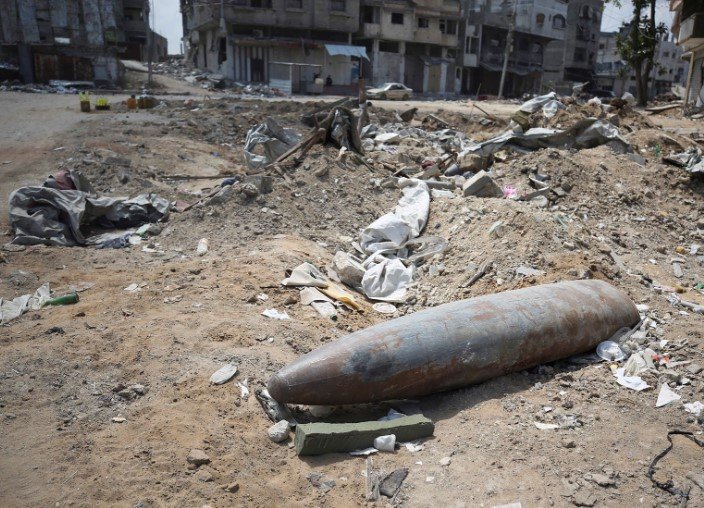Egypt has sent a convoy of heavy machinery into the Gaza Strip to clear massive rubble piles and search for the remains of Israeli captives. This move, coordinated with Israel, happened on October 26, 2025, through the Kerem Shalom crossing, aiming to support ceasefire efforts and aid recovery in the war-torn area.
Background on the Gaza Situation
Gaza has faced intense destruction from recent conflicts, leaving behind tons of debris that blocks roads and hides potential remains. The entry of Egyptian vehicles marks a key step in post-war recovery, as teams work to uncover bodies and restore access.
This operation ties into a fragile ceasefire between Israel and Hamas, reached earlier in October 2025. Reports show that thousands of structures were leveled during the fighting, creating urgent needs for cleanup and searches. Officials estimate over 10,000 Palestinian bodies may still be under the rubble, alongside missing Israeli captives.
The push for this effort gained momentum after international pressure, including from the United States, to locate all remains and prevent further violations of the truce.
Details of the Egyptian Convoy
Egypt dispatched an initial group of six heavy vehicles on October 25, followed by 12 more the next day. These include bulldozers, excavators, and trucks designed for tough terrain.

The teams focus on southern and central Gaza, where battles were fiercest. Their main goals are to remove debris, reopen roads, and dig for captives’ bodies. Sources indicate the machinery will operate in areas not fully controlled by Israeli forces, with support from the Red Cross.
Here is a quick look at the equipment involved:
- Bulldozers: For pushing away large rubble piles.
- Excavators: To dig precisely in targeted spots.
- Heavy trucks: For transporting debris and tools.
This setup allows for efficient work, with plans to expand the fleet in coming days.
Experts say the operation could take weeks, given the scale of destruction. Early assessments show that some roads in Gaza City and Khan Younis are completely blocked, slowing down aid delivery.
Coordination Between Egypt and Israel
The entry was approved by Israeli Prime Minister Benjamin Netanyahu, ensuring smooth passage through Kerem Shalom. Joint teams from both sides oversee the process to maintain security and coordination.
Egyptian officials at the Rafah crossing confirmed the moves, highlighting ongoing talks to speed up searches. This collaboration is part of broader efforts to stabilize the region after the ceasefire.
Palestinian factions, including Hamas, are also involved in the searches, working with Egyptian experts. The goal is to recover remains of about 13 missing Israeli captives, as per recent reports.
| Key Players | Role in Operation |
|---|---|
| Egypt | Provides machinery and teams for rubble clearance and searches |
| Israel | Approves entry and supervises security |
| Hamas | Assists in locating bodies within Gaza |
| Red Cross | Supports neutral oversight and humanitarian aid |
This table outlines the main roles, showing how multiple groups are teaming up.
Challenges in the Search Efforts
Despite the progress, teams face big hurdles like unstable structures and ongoing security risks. The rubble’s depth in some areas makes digging slow and dangerous.
Weather conditions in late October could add complications, with rain turning debris into mud. Plus, the emotional toll on families waiting for news about loved ones remains high.
Recent events, such as minor truce breaches reported in mid-October 2025, underscore the fragility. Analysts warn that any escalation could halt the operations.
Funding for reconstruction is another issue, with international donors pledging support but delivery lagging. Egypt plans to assess damage fully before major rebuilding starts.
Local residents in Gaza express hope that clearing rubble will allow better access to food and medical supplies, which have been scarce.
Broader Implications for Peace
This initiative could strengthen the ceasefire by addressing key demands from both sides. Finding captives’ remains might ease tensions and open doors for prisoner exchanges.
On a larger scale, it sets a model for international cooperation in conflict zones. The United States has ramped up pressure for full body recoveries, tying it to aid packages.
Looking ahead, successful searches might lead to more Egyptian involvement in Gaza’s governance and rebuilding. This aligns with Egypt’s role as a mediator in Middle East peace talks.
International Reactions and Future Outlook
Global leaders have welcomed the move, with the United Nations calling it a positive step toward humanitarian relief. European Union officials noted it could help in delivering more aid to Gaza’s 2 million residents.
Critics, however, point out that Israel initially resisted allowing the equipment, only relenting under pressure. This highlights ongoing distrust in the region.
As operations continue, monitors will watch for compliance with the truce. The coming weeks will test if this effort leads to lasting stability.
What do you think about this development? Share your thoughts in the comments below and spread the word by sharing this article with others interested in Middle East updates.
